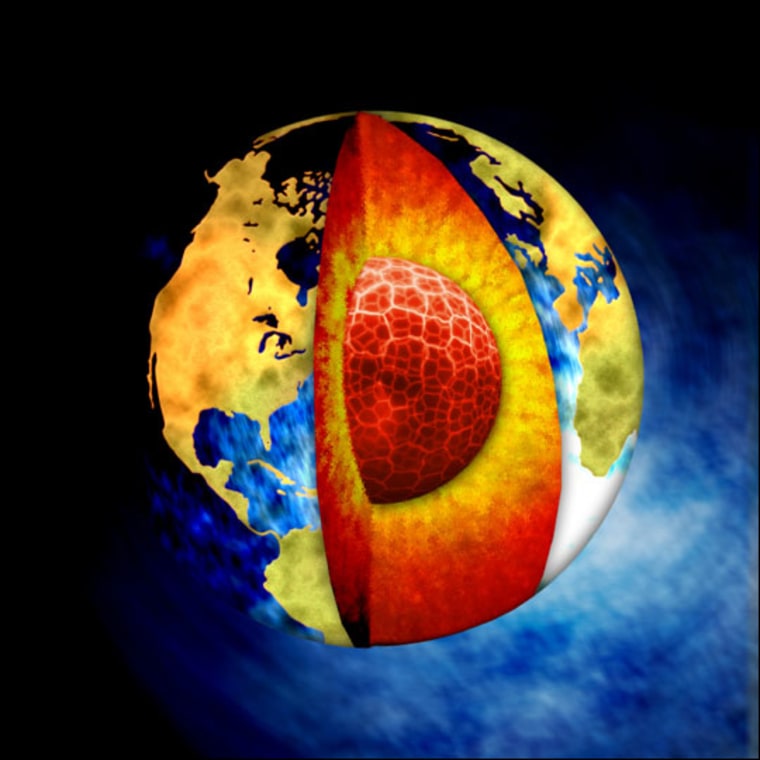It's a classic image from every youngster's science textbook: a cutaway image of Earth's interior. The brown crust is paper-thin; the warm mantle orange, the seething liquid of the outer core yellow, and at the center the core, a ball of solid, red-hot iron.
Now a new theory aims to rewrite it all by proposing the seemingly impossible: Earth has not one but two inner cores.
The idea stems from an ancient, cataclysmic collision that scientists believe occurred when a Mars-sized object hit Earth about 4.45 billion years ago. The young Earth was still so hot that it was mostly molten, and debris flung from the impact is thought to have formed the moon.
Haluk Cetin and Fugen Ozkirim of Murray State University think the core of the Mars-sized object may have been left behind inside Earth, and that it sank down near the original inner core. There the two may still remain, either separate or as conjoined twins, locked in a tight orbit.
Their case is largely circumstantial and speculative, Cetin admitted.
"We have no solid evidence yet, and we're not saying 100 percent that it still exists," he said. "The interior of Earth is a very hard place to study."
The ancient collision is a widely accepted phenomenon. But most scientists believe the incredible pressure at the center of the planet would've long since pushed the two cores into each other.
Still, the inner core is a mysterious place. Recently, scientists discovered that it rotates faster than the rest of the planet. And a study last year of how seismic waves propagate through the iron showed that the core is split into two distinct regions.
Beyond that, little is known. But Cetin and Ozkirim think a dual inner core can explain the rise of plate tectonics, and help explain why the planet remains hotter today than it should be, given its size.
"If this is true, it would change all Earth models as we know them," Cetin said. "If not, and these two cores coalesced early on, we would have less to say, but it could still be how plate tectonics got started."
Based on models of Earth's interior, Cetin thinks the two cores rotate in opposite directions, like the wheels of a pasta maker. Their motion would suck in magma from behind and spit it out in front. If this motion persisted for long enough, it could set up a giant current of circulation that would push plates of crust apart in front, and suck them down into the mantle in back.
Friction generated by the motion would keep the planet hot.
Scientists asked to comment on this hypothesis were extremely skeptical. Some asked not to be quoted, citing insufficient evidence to make a well-reasoned critique of the study, which the authors presented last month at the fall meeting of the American Geophysical Union in San Francisco.
"In terms of its volume, and even its mass, the Earth's inner core is quite small relative to the whole planet, about 1 percent," Paul Richards of Columbia University said. "I seriously doubt that inner core dynamics could play a significant role in moving the tectonic plates."
More on Earth's magnetic field | Plate tectonics
